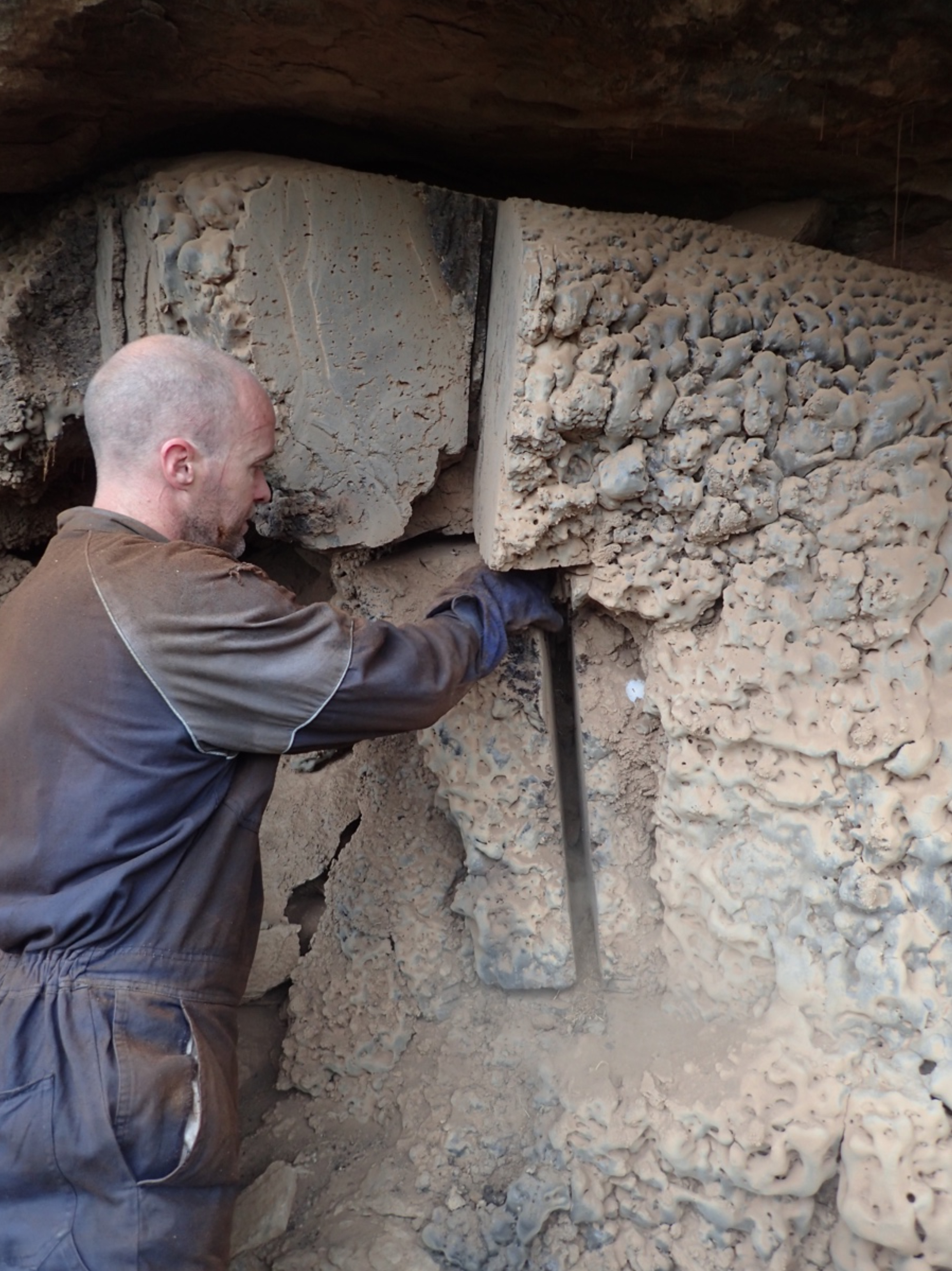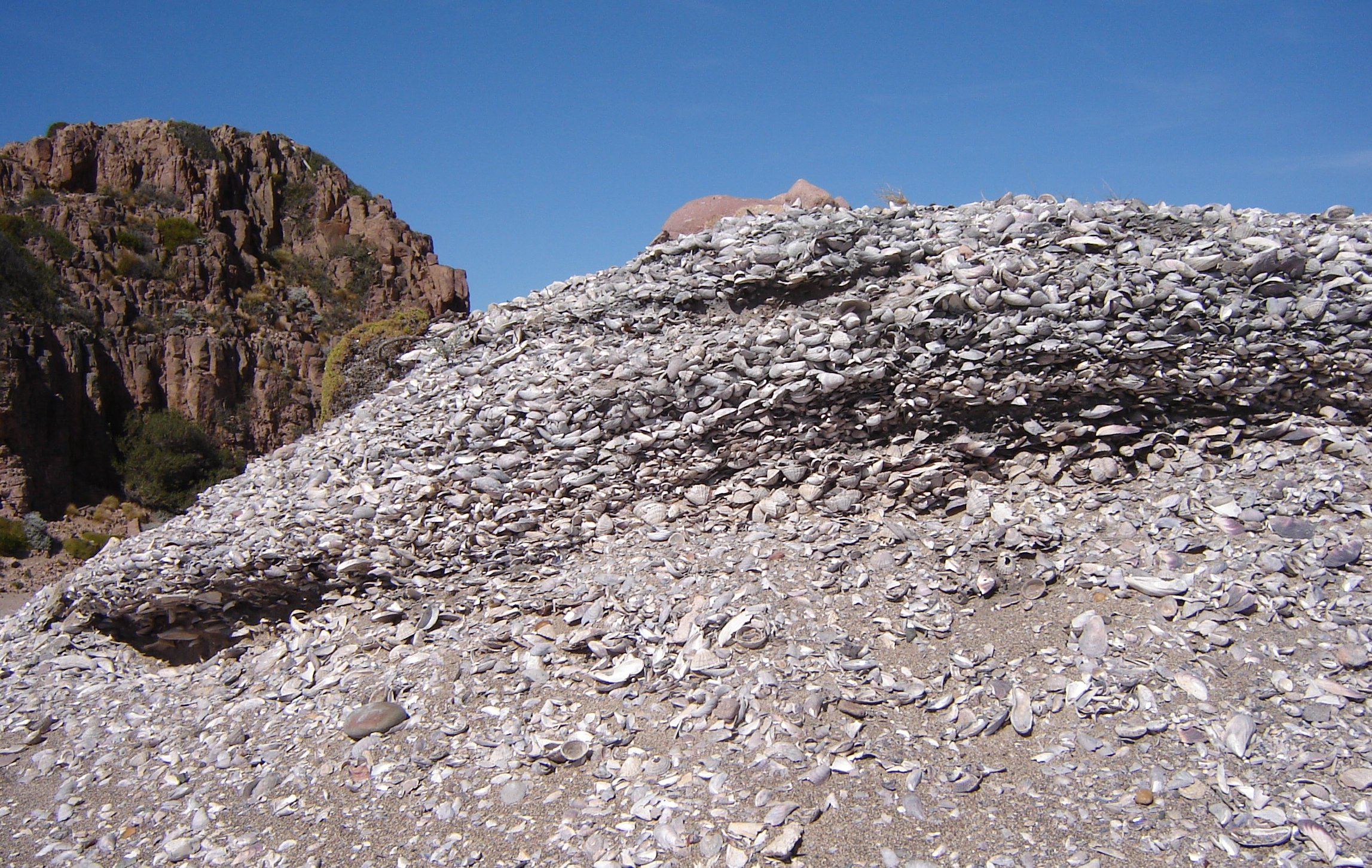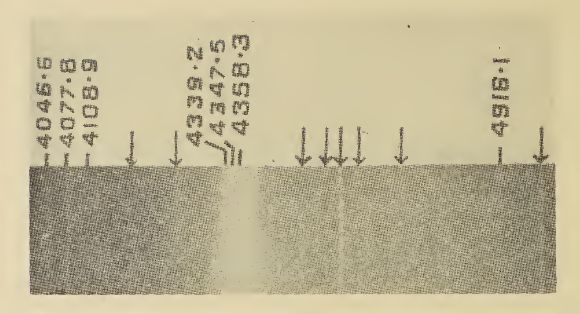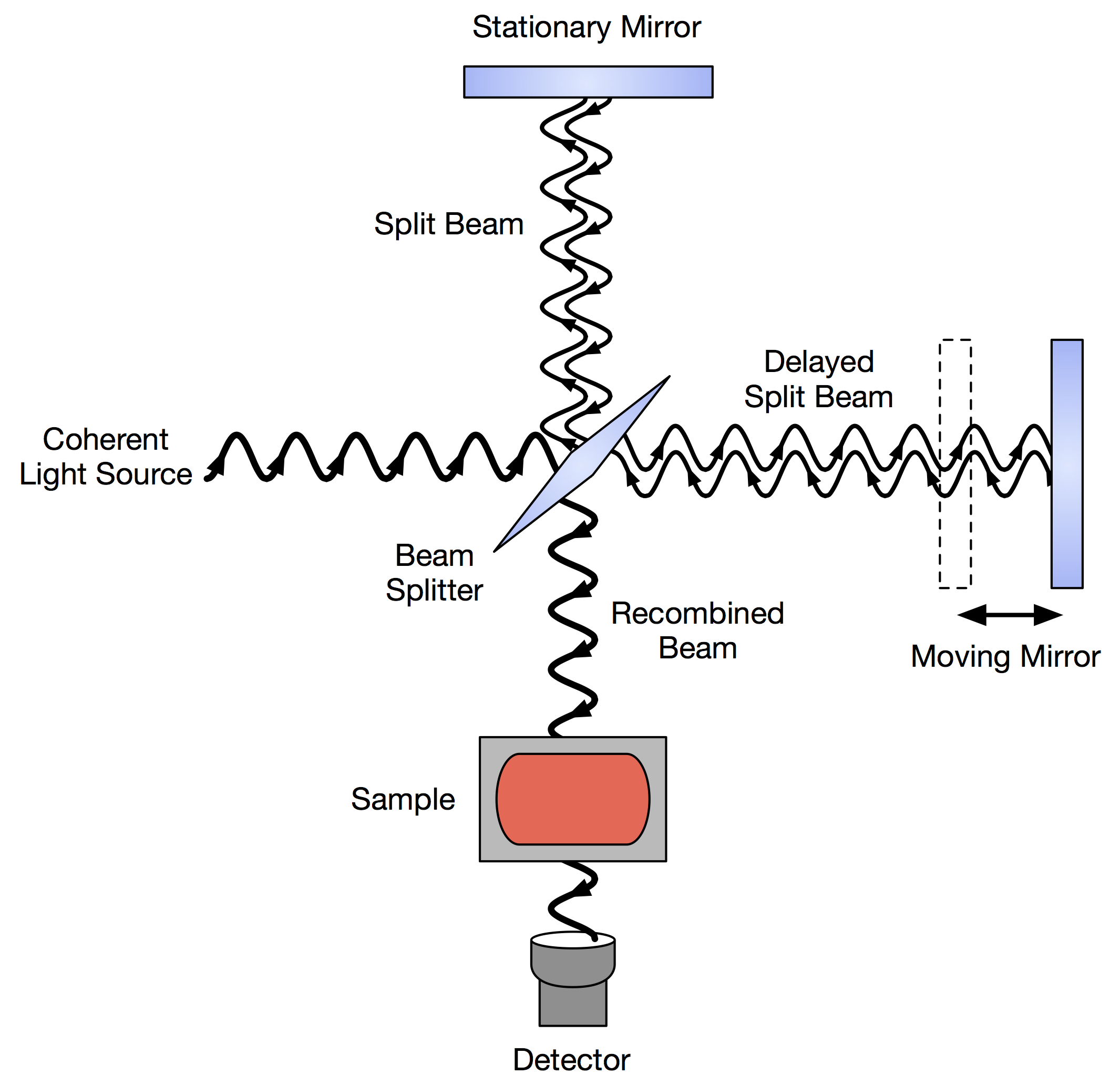|
Rock Hyrax Midden
A rock hyrax midden is a stratified accumulation of fecal pellets and a brown amber-like a urinary product known as hyraceum excreted by the rock hyrax and closely related species. Hyrax middens form very slowly (ranging from ~5 years to >1000 years for 1 mm of hyraceum accumulation), over long periods of time, with many spanning tens of thousands of years and some dating as far back as ~70,000 years. Hyrax middens contain a diverse range of paleoenvironmental proxies, including fossil pollen and stable carbon, nitrogen and hydrogen isotopes. Combined with the antiquity of hyrax middens, and the often-continuous nature of their deposition, hyrax middens have become a valuable means of reconstructing past environmental and climate change Rock hyraxes are known to use communal latrines. These sites are often found in sheltered locations, where the threat of predation is limited, and middens form when they are protected from the elements. At well-protected sites, it may accumu ... [...More Info...] [...Related Items...] OR: [Wikipedia] [Google] [Baidu] |
Hyraceum
Hyraceum () is the petrified and rock-like excrement composed of both urine and feces of the rock hyrax (''Procavia capensis'') and closely related species. The rock hyrax defecates in the same location over generations, which may be sheltered in caves. These locations form rock hyrax midden, middens that are composed of hyraceum and hyrax pellets, which can be petrified and preserved for over 50,000 years. These middens form a record of past climate and vegetation. It is also a sought-after material that has been used in both traditional South African medicine and perfumery. Hyraceum in perfumery The material hardens and ages until it becomes a fairly sterile, rock-like material (also referred to as "Africa Stone") that contains compounds giving it an animalic, deeply complex fermented scent that combines the elements of musk, castoreum, Civetone, civet, tobacco and agarwood. The material is harvested without disturbing the animals by digging strata of the brittle, resinou ... [...More Info...] [...Related Items...] OR: [Wikipedia] [Google] [Baidu] |
Rock Hyrax
The rock hyrax (; ''Procavia capensis''), also called dassie, Cape hyrax, rock rabbit, and (from some interpretations of a word used in the King James Bible) coney, is a medium-sized terrestrial mammal native to Africa and the Middle East. Commonly referred to in South Africa as the dassie (; ), it is one of the five living species of the order Hyracoidea, and the only one in the genus ''Procavia''. Rock hyraxes weigh and have short ears. Rock hyraxes are found at elevations up to above sea level in habitats with rock crevices, allowing them to escape from predators. They are the only extant terrestrial afrotherians in the Middle East. Hyraxes typically live in groups of 10–80 animals, and forage as a group. They have been reported to use sentries to warn of the approach of predators. Having incomplete thermoregulation, they are most active in the morning and evening, although their activity pattern varies substantially with season and climate. Over most of its range, the ... [...More Info...] [...Related Items...] OR: [Wikipedia] [Google] [Baidu] |
Climate Change
Present-day climate change includes both global warming—the ongoing increase in Global surface temperature, global average temperature—and its wider effects on Earth's climate system. Climate variability and change, Climate change in a broader sense also includes previous long-term changes to Earth's climate. The current rise in global temperatures is Scientific consensus on climate change, driven by human activities, especially fossil fuel burning since the Industrial Revolution. Fossil fuel use, Deforestation and climate change, deforestation, and some Greenhouse gas emissions from agriculture, agricultural and Environmental impact of concrete, industrial practices release greenhouse gases. These gases greenhouse effect, absorb some of the heat that the Earth Thermal radiation, radiates after it warms from sunlight, warming the lower atmosphere. Carbon dioxide, the primary gas driving global warming, Carbon dioxide in Earth's atmosphere, has increased in concentratio ... [...More Info...] [...Related Items...] OR: [Wikipedia] [Google] [Baidu] |
Midden Examples
A midden is an old dump for domestic waste. It may consist of animal bones, human excrement, botanical material, mollusc shells, potsherds, lithics (especially debitage), and other artifacts and ecofacts associated with past human occupation. These features provide a useful resource for archaeologists who wish to study the diets and habits of past societies. Middens with damp, anaerobic conditions can even preserve organic remains in deposits as the debris of daily life are tossed on the pile. Each individual toss will contribute a different mix of materials depending upon the activity associated with that particular toss. During the course of deposition sedimentary material is deposited as well. Different mechanisms, from wind and water to animal digs, create a matrix which can also be analysed to provide seasonal and climatic information. In some middens individual dumps of material can be discerned and analysed. Shells A shell midden or shell mound is an archaeologica ... [...More Info...] [...Related Items...] OR: [Wikipedia] [Google] [Baidu] |
Pack Rat Midden
A pack rat or packrat, also called a woodrat or trade rat, are any species in the North and Central American rodent genus ''Neotoma''. Pack rats have a rat-like appearance, with long tails, large ears, and large, black eyes. Pack rats are noticeably larger than deer mice, harvest mice, and grasshopper mice, and are usually somewhat larger than cotton rats. Species ''Neotoma'' includes three subgenera, Daggers (†) mark extinct species: * Subgenus ''Neotoma'' ** ''Neotoma albigula'' - white-throated woodrat *** '' Neotoma albigula varia'' - Turner Island woodrat ** '' Neotoma angustapalata'' - Tamaulipan woodrat ** '' Neotoma bryanti'' - Bryant's woodrat *** '' Neotoma bryanti anthonyi'' - Anthony's woodrat *** †'' Neotoma bryanti bunkeri'' - Bunker's woodrat *** †'' Neotoma bryanti martinensis'' - San Martín Island woodrat ** '' Neotoma chrysomelas'' - Nicaraguan woodrat ** '' Neotoma devia'' - Arizona woodrat ** ''Neotoma ferruginea'' - Guatemala woodrat ** †''Neot ... [...More Info...] [...Related Items...] OR: [Wikipedia] [Google] [Baidu] |
Speleothem
A speleothem (; ) is a geological formation made by mineral deposits that accumulate over time in natural caves. Speleothems most commonly form in calcareous caves due to carbonate dissolution reactions. They can take a variety of forms, depending on their depositional history and environment. Their chemical composition, gradual growth, and preservation in caves make them useful paleoclimatic proxies. Chemical and physical characteristics More than 300 variations of cave mineral deposits have been identified. The vast majority of speleothems are calcareous, composed of calcium carbonate (CaCO3) minerals (calcite or aragonite). Less commonly, speleothems are made of calcium sulfate ( gypsum or mirabilite) or opal. Speleothems of pure calcium carbonate or calcium sulfate are translucent and colorless. The presence of iron oxide or copper provides a reddish brown color. The presence of manganese oxide can create darker colors such as black or dark brown. Speleothems can also b ... [...More Info...] [...Related Items...] OR: [Wikipedia] [Google] [Baidu] |
Midden Strat Crop
A midden is an old dump for domestic waste. It may consist of animal bones, human excrement, botanical material, mollusc shells, potsherds, lithics (especially debitage), and other artifacts and ecofacts associated with past human occupation. These features provide a useful resource for archaeologists who wish to study the diets and habits of past societies. Middens with damp, anaerobic conditions can even preserve organic remains in deposits as the debris of daily life are tossed on the pile. Each individual toss will contribute a different mix of materials depending upon the activity associated with that particular toss. During the course of deposition sedimentary material is deposited as well. Different mechanisms, from wind and water to animal digs, create a matrix which can also be analysed to provide seasonal and climatic information. In some middens individual dumps of material can be discerned and analysed. Shells A shell midden or shell mound is an archaeologica ... [...More Info...] [...Related Items...] OR: [Wikipedia] [Google] [Baidu] |
Radiocarbon Dating
Radiocarbon dating (also referred to as carbon dating or carbon-14 dating) is a method for Chronological dating, determining the age of an object containing organic material by using the properties of carbon-14, radiocarbon, a radioactive Isotopes of carbon, isotope of carbon. The method was developed in the late 1940s at the University of Chicago by Willard Libby. It is based on the fact that radiocarbon () is constantly being created in the Atmosphere of Earth, Earth's atmosphere by the interaction of cosmic rays with atmospheric nitrogen. The resulting combines with atmospheric oxygen to form radioactive carbon dioxide, which is incorporated into plants by photosynthesis; animals then acquire by eating the plants. When the animal or plant dies, it stops exchanging carbon with its environment, and thereafter the amount of it contains begins to decrease as the undergoes radioactive decay. Measuring the amount of in a sample from a dead plant or animal, such as a piece of w ... [...More Info...] [...Related Items...] OR: [Wikipedia] [Google] [Baidu] |
Hyrax Midden Pyrolysis
Hyraxes (), also called dassies, are small, stout, thickset, herbivorous mammals in the family Procaviidae within the order Hyracoidea. Hyraxes are well-furred, rotund animals with short tails. Modern hyraxes are typically between in length and weigh between . They are superficially similar to marmots or over-large pikas but are much more closely related to elephants and sirenians. Hyraxes have a life span of 9 to 14 years. Both types of "rock" hyrax ( ''P. capensis'' and ''H. brucei'') live on rock outcrops, including cliffs in Ethiopia and isolated granite outcrops called koppies in southern Africa. Almost all hyraxes are limited to Africa; the exception is the rock hyrax (''P. capensis'') which is also found in adjacent parts of the Middle East. Hyraxes were a much more diverse group in the past encompassing species considerably larger than modern hyraxes. The largest known extinct hyrax, '' Titanohyrax ultimus'', has been estimated to weigh , comparabl ... [...More Info...] [...Related Items...] OR: [Wikipedia] [Google] [Baidu] |
Raman Spectroscopy
Raman spectroscopy () (named after physicist C. V. Raman) is a Spectroscopy, spectroscopic technique typically used to determine vibrational modes of molecules, although rotational and other low-frequency modes of systems may also be observed. Raman spectroscopy is commonly used in chemistry to provide a structural fingerprint by which molecules can be identified. Raman spectroscopy relies upon inelastic scattering of photons, known as Raman scattering. A source of monochromatic light, usually from a laser in the visible spectrum, visible, near infrared, or ultraviolet, near ultraviolet range is used, although X-ray Raman scattering, X-rays can also be used. The laser light interacts with molecular vibrations, phonons or other excitations in the system, resulting in the energy of the laser photons being shifted up or down. The shift in energy gives information about the vibrational modes in the system. Time-resolved spectroscopy and infrared spectroscopy typically yields similar y ... [...More Info...] [...Related Items...] OR: [Wikipedia] [Google] [Baidu] |
Fourier-transform Infrared Spectroscopy
Fourier transform infrared spectroscopy (FTIR) is a technique used to obtain an infrared spectrum of absorption or emission of a solid, liquid, or gas. An FTIR spectrometer simultaneously collects high-resolution spectral data over a wide spectral range. This confers a significant advantage over a dispersive spectrometer, which measures intensity over a narrow range of wavelengths at a time. The term ''Fourier transform infrared spectroscopy'' originates from the fact that a Fourier transform (a mathematical process) is required to convert the raw data into the actual spectrum. Conceptual introduction The goal of absorption spectroscopy techniques (FTIR, ultraviolet-visible ("UV-vis") spectroscopy, etc.) is to measure how much light a sample absorbs at each wavelength. The most straightforward way to do this, the "dispersive spectroscopy" technique, is to shine a monochromatic light beam at a sample, measure how much of the light is absorbed, and repeat for each different ... [...More Info...] [...Related Items...] OR: [Wikipedia] [Google] [Baidu] |





